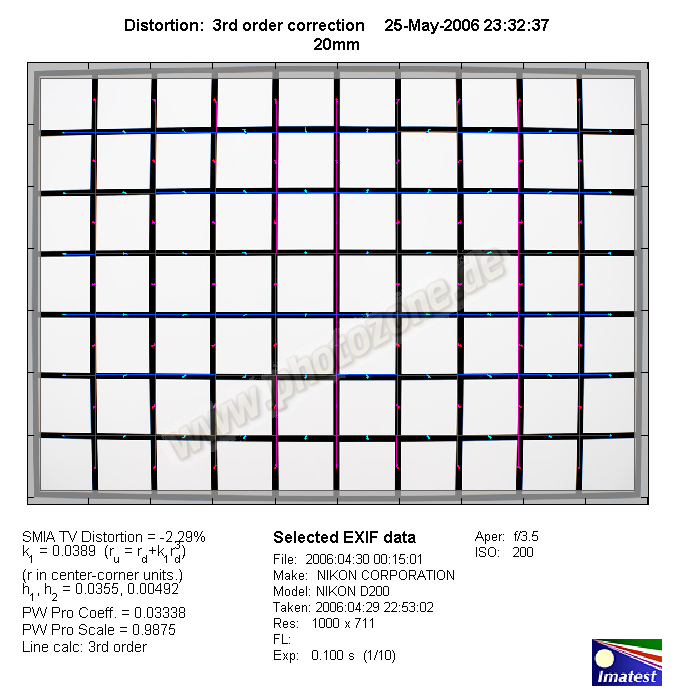|
Page 2 of 2

Distortion
The lens shows quite pronounced barrel distortion on a DX camera.

The chart above has a real-world size of about 120x80cm.
Vignetting
Even though the lens is designed for a larger image format than DX and should benefit from the sweet spot advantage on the D7000, the Nikkor shows quite pronounced vignetting at the largest aperture setting. Stopped down, however, the amount of light fall-off towards the corners is considerably lower and no longer an issue for most subjects.

MTF (resolution)
The lens delivers very good resolution in the image center at large apertures, which increases to excellent figures by stopping down to f/5.6 or f/8.
The borders and corners are quite soft wide open. Again, stopping down lifts the resolution, the best performance across the frame is reached at f/8.
Please note that the MTF results are not directly comparable across the different systems!
Below is a simplified summary of the formal findings. The chart shows line widths per picture height (LW/PH) which can be taken as a measure for sharpness.
If you want to know more about the MTF50 figures you may check out the corresponding Imatest Explanations

Chromatic Aberrations (CAs)
Chromatic aberrations (color shadows at harsh contrast transitions) are quite pronounced with values of more than 2.5 pixels at the image borders throughout most of the tested aperture range.
Note that CAs can be corrected in software or by the camera itself (most modern Nikon DSLRs remove CAs themselves if you shoot JPGs). However, with values that high, CAs will have an influence on perceived sharpness, even if the colour cast at contrast edges can be easily removed.

Sample Images
You can find some sample images taken with the Nikon D3x in our Nikon FX review of the lens.
VerdictThe Nikkor AF-D 20mm f/2.8 does not really convince on the D7000. The center resolution is very good to excellent, but the borders and corners are quite soft wide open and the lens needs to be stopped down considerably to achieve very good resolution across the frame.
Distortion is surprisingly high for a FX prime lens. CAs are quite pronounced, but can be taken care of in post processing. The amount of vignetting is also a bit on the high side wide open, but no issue stopped down.
The build quality is very good. Unfortunately the lens has no internal motor, which means it doesn't autofocus on Nikon's entry-level DX cameras.
In summary, this doesn't look very convincing. However, the lens is quite compact and leight-weight. So if you want to travel light, this may be a good reason to choose this lens over other alternatives.
|